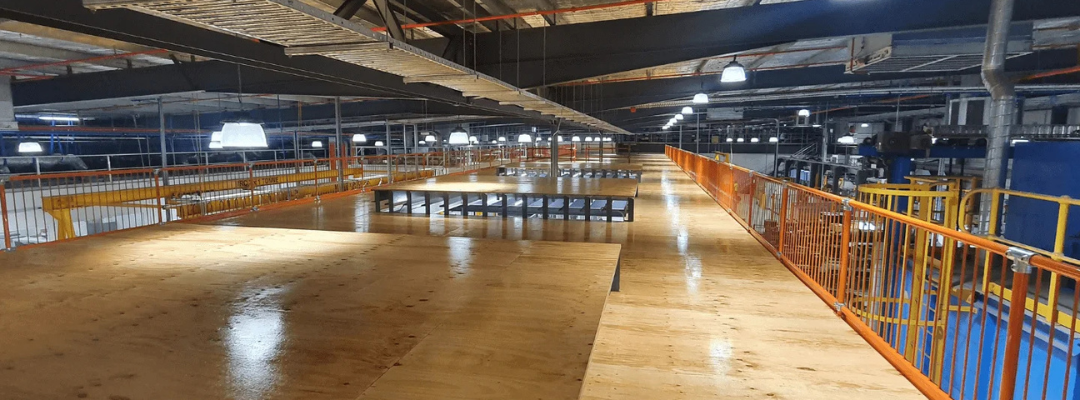Proper maintenance and regular inspections of mezzanine floors are crucial to ensure their safety, functionality, and longevity. Mezzanine floors are durable structures, but like any installation, they require routine care to prevent wear and tear, maintain structural integrity, and comply with safety regulations.
1. Regular Inspection Checklist
Perform inspections periodically to identify potential issues early. Focus on the following areas:
a. Structural Integrity
- Steel Frames and Beams: Check for rust, corrosion, cracks, or signs of deformation.
- Welds and Bolted Connections: Inspect for loosened bolts, cracked welds, or missing fasteners.
- Load-Bearing Components: Ensure there are no signs of overloading, such as bending or sagging.
b. Flooring
- Surface Condition: Inspect for cracks, wear, or damage to the flooring material (e.g., wood, steel, or composite panels).
- Anti-Slip Coatings: Ensure any anti-slip surfaces remain intact and effective.
c. Stairs and Handrails
- Handrails and Guardrails: Check for looseness, damage, or missing components.
- Stair Treads: Inspect for wear, corrosion, or debris that could cause slipping.
d. Foundations and Anchors
- Foundation Stability: Look for signs of settling, cracks, or instability in the foundation.
- Anchoring Points: Ensure the mezzanine floor is securely anchored to the foundation or supporting structures.
e. Safety Features
- Emergency Exits: Confirm that fire escapes and emergency exits are accessible and unobstructed.
- Lighting: Ensure adequate lighting is available for safe navigation.
2. Routine Maintenance Practices
a. Cleaning
- Regular Cleaning: Remove dust, debris, and spills from the floor surface to prevent accidents and wear.
- Gutters and Drainage: If applicable, clear any blockages in drainage systems to prevent water damage.
b. Protective Coatings
- Rust Prevention: Reapply anti-corrosion coatings on steel components as needed.
- Floor Coatings: Maintain anti-slip and protective coatings on the flooring surface.
c. Load Management
- Monitor Load Capacity: Avoid overloading the mezzanine by adhering to its maximum weight limit.
- Even Distribution: Ensure loads are evenly distributed across the floor to prevent localized stress.
d. Equipment Maintenance
- Lifts and Conveyors: If mechanical equipment is integrated, perform regular maintenance on lifts, hoists, or conveyor systems.
e. Pest Control
- For mezzanines with wooden components, implement pest control measures to prevent damage from termites or other pests.
3. Preventive Measures for Longevity
a. Address Minor Issues Early
- Repair small cracks, tighten bolts, and fix loose handrails promptly to prevent larger problems.
b. Weatherproofing
- Apply weather-resistant coatings to protect mezzanine components exposed to moisture, especially in outdoor or semi-outdoor installations.
c. Upgrade Safety Features
- Replace outdated safety components, such as railings or stairs, to meet updated building codes or operational requirements.
d. Training Staff
- Educate employees about load limits, safe usage, and how to report maintenance concerns.
4. Frequency of Inspections and Maintenance
- Monthly: Conduct basic visual checks of the structure, flooring, and safety features.
- Quarterly: Perform a more thorough inspection, including connections, bolts, and load-bearing elements.
- Annually: Engage a professional to perform a detailed structural assessment and ensure compliance with safety standards.
5. Common Issues to Watch For
- Corrosion: Particularly in humid or coastal environments.
- Overloading: Excess weight can lead to deformation or collapse.
- Loosened Components: Vibration or repeated usage can loosen bolts and connections.
- Surface Wear: Damage to flooring can lead to accidents or reduced functionality.
6. Compliance with Safety Standards
- Building Codes: Ensure the mezzanine adheres to local building regulations.
- Fire Safety: Check compliance with fire safety requirements, including proper exits and fire-resistant materials.
- Weight Certification: Periodically recertify the load-bearing capacity of the mezzanine.
7. Hiring Professionals for Maintenance
- Engage structural engineers or certified inspectors for detailed assessments.
- Use professional services for specialized repairs, such as welding or applying industrial coatings.

